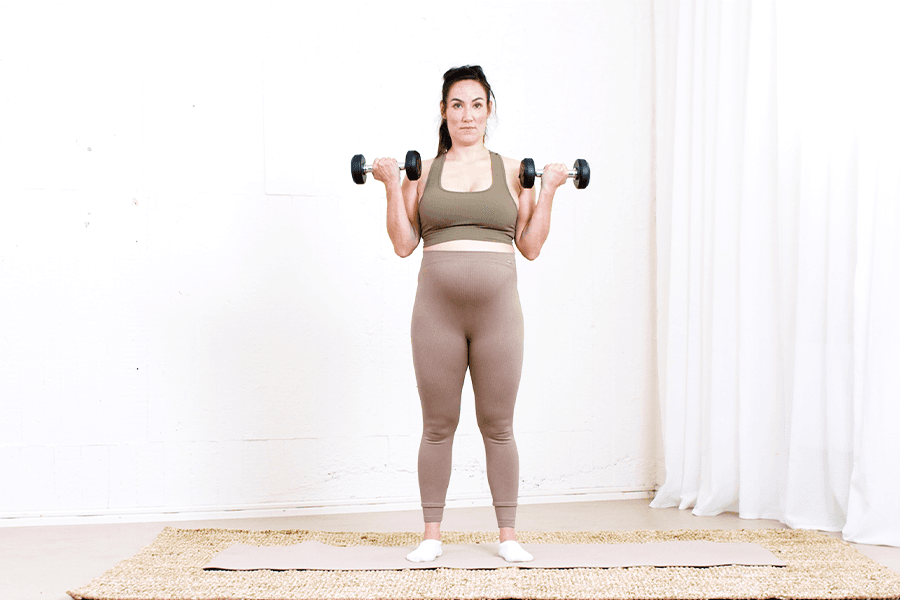For most women, both nausea and fatigue have subsided during the second trimester, therefore many feel stronger and more energetic during this phase. Both strength training and cardio training are good, at a moderate level. You should feel a little resistance during your workout. A good tip is to put an extra emphasis on the butt and back muscles, as these tend to be heavily loaded during a pregnancy.
Abdominal muscles
During the second trimester, the belly is growing rapidly, making it difficult to activate the abdominal muscles as we normally do. This is because muscles in the stomach, connective tissue, and membranes are stretched as the uterus and baby grow.
Vena cava
During the second trimester, the risk of Vena Cava syndrome increases, which is when the uterus is pressing on a large vessel (Inferior Vena Cava). This could cause impairs of blood returning to the heart. This usually happens in a supine position. Symptoms of Vena Cava suspension are a feeling of fainting, dizziness, and discomfort. Therefore it is not recommended to perform exercises lying on your back starting around week 16.
The pelvic floor
The weight from both the growing uterus and baby is increasing the load down towards your pelvic floor. For this reason, it would be smart to start finding and strengthening your pelvic floor muscles. If you experience, for example, urine leakage or a feeling of heaviness during running, jumping or heavy lifting, you should reduce these activities.
Exercising with pregnancy-related problems
All women react differently to pregnancy, so it is difficult to provide general training advice that will suit everybody. For example, if you experience pelvic pain, back pain, carpal tunnel syndrome or pelvic floor symptoms - seek help from a physiotherapist or naprapath with expertise in women’s health. This will allow you to get an examination and tailored advice.
In case of any medical conditions or high-risk pregnancy, you should consult your physician or other health care professional before doing any exercise to make sure it is safe to perform.
Sources:
- Bø et al 2016. Exercise and pregnancy in recreational and elite athletes: 2016 evidence summary from the IOC aepert group meeting, Lausanne. Part 1 - exercise in women planning pregnancy and those who are pregnant.
- Fysisk aktivitet i sjukdomsprevention och sjukdomsbehandling-FYSS 2021. YFA. Rekommendationer om fysisk aktivitet och stillasittande under och efter graviditet.
- Regberg Lundborg. Balkong Förlag 2017. Gravidkraft - Hälsa genom rörelse och träning
- Mottola et al. 2019. Canadian guideline for physical activity throughout pregnancy.
- American College of Obstetricians and Gynecologists 2003. Exercise during pregnancy and the postpartum period
